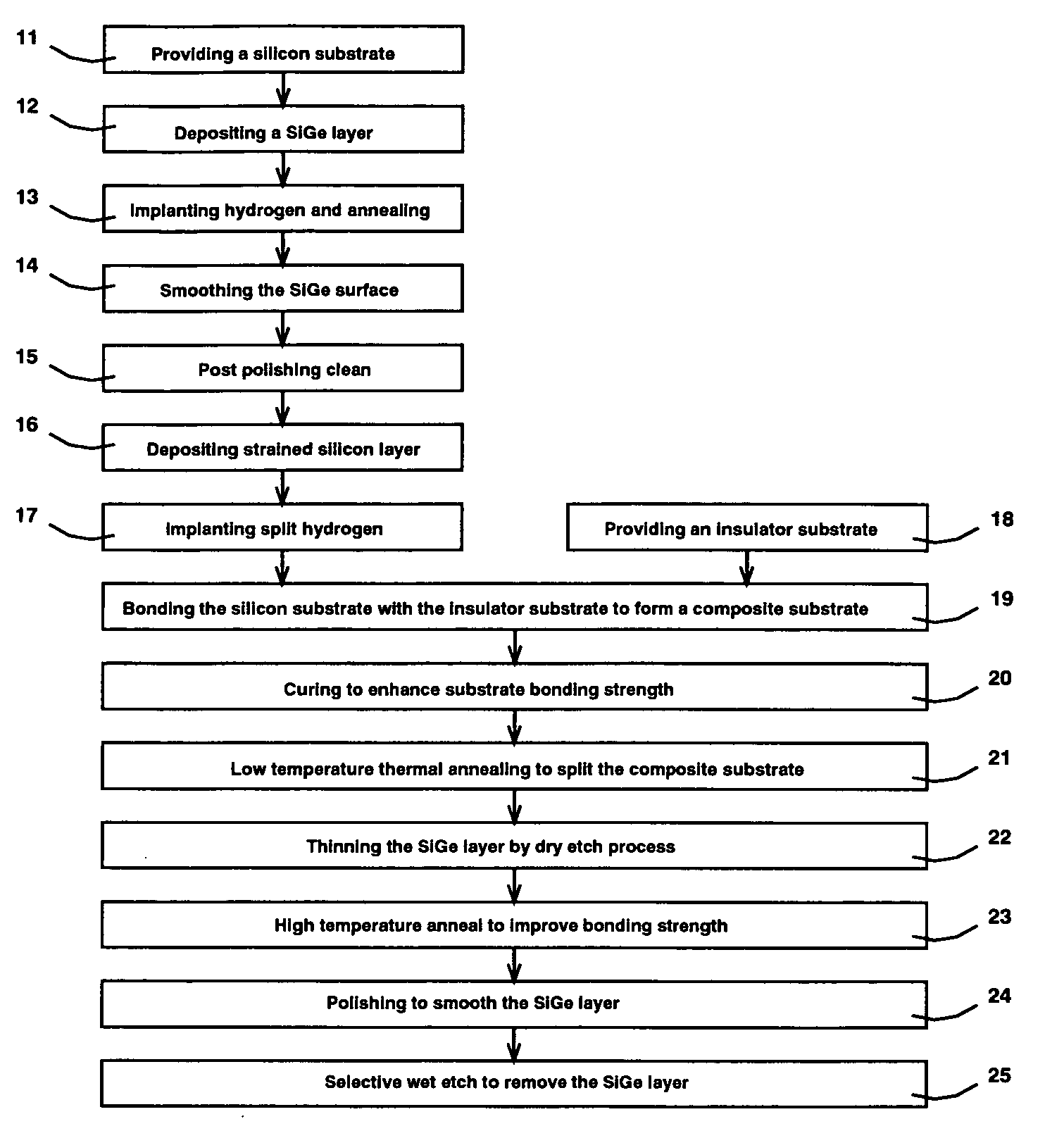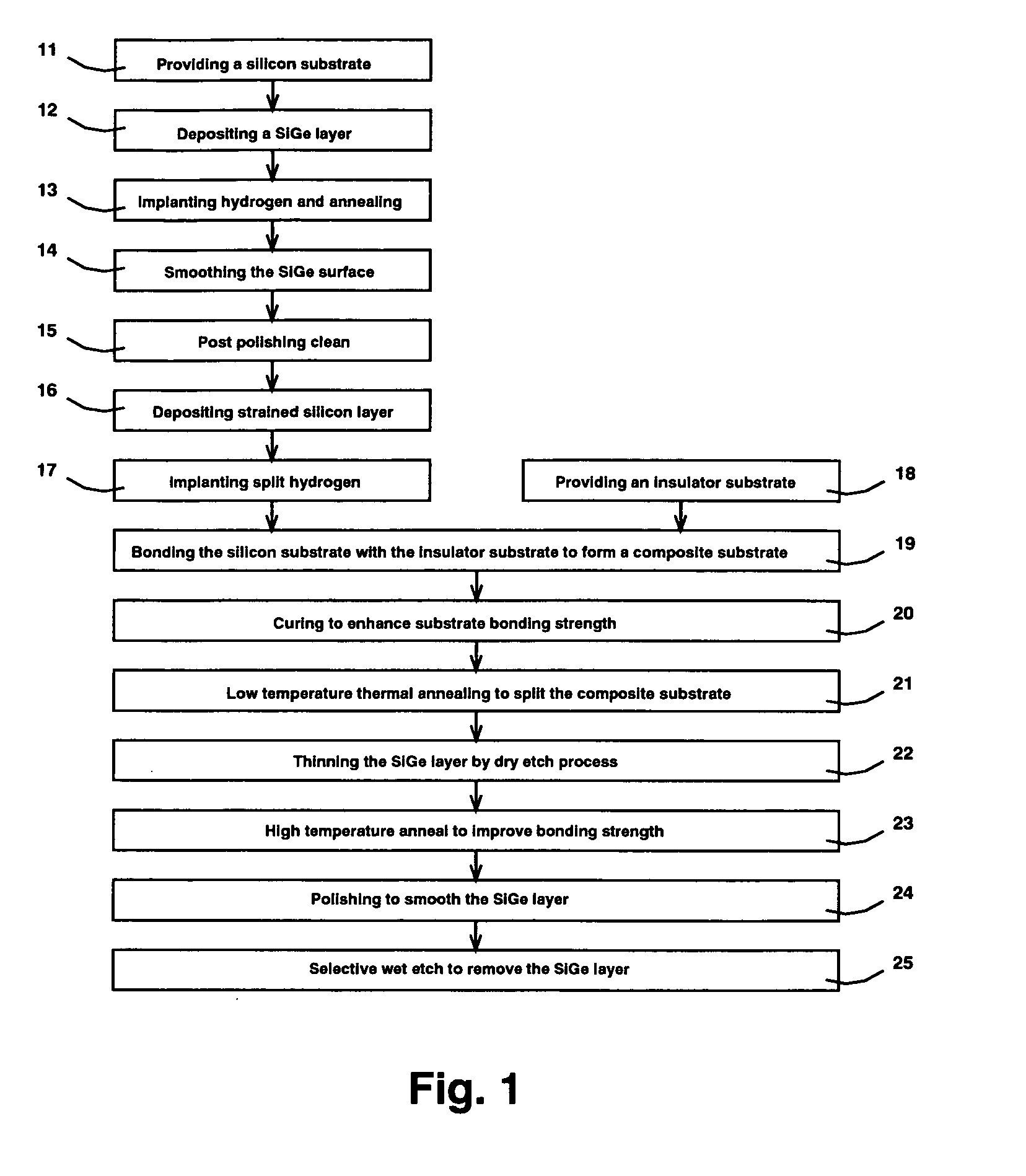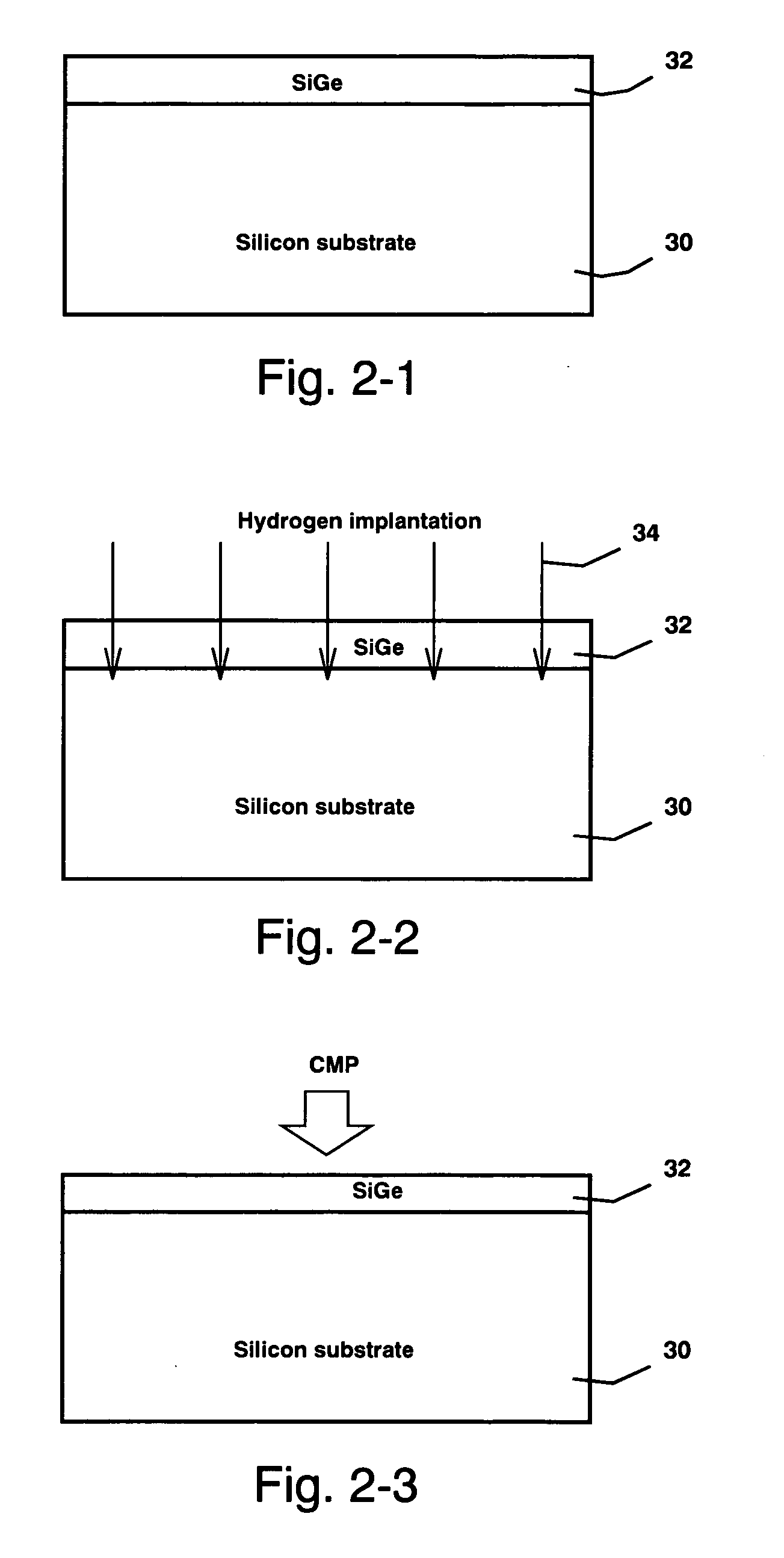Strained silicon on insulator from film transfer and relaxation by hydrogen implantation
a technology of strained silicon and insulator, applied in the direction of basic electric elements, electrical apparatus, semiconductor devices, etc., can solve the problems of easy propagation of thread dislocations to the topmost strained silicon layer, and achieve the effects of promoting the relaxation of the sige seed layer, better integration, and cost-effectiveness
- Summary
- Abstract
- Description
- Claims
- Application Information
AI Technical Summary
Benefits of technology
Problems solved by technology
Method used
Image
Examples
first embodiment
[0036] the present invention SSOI fabrication process employs the fabrication process of a thin relaxed SiGe seed layer and comprises the steps of: [0037] preparing a silicon substrate [0038] preparing a thin relaxed SiGe seed layer by ion implantation [0039] depositing a SiGe layer overlying the silicon substrate [0040] implanting ions into the SiGe layer [0041] annealing to convert the SiGe layer to a relaxed SiGe layer [0042] Polishing the SiGe layer surface and performing a post polishing clean [0043] depositing an epitaxial silicon layer on the relaxed SiGe layer, thereby generating a strained silicon layer [0044] transferring the epitaxial silicon / SiGe multilayer to an insulator layer [0045] implanting ions into the epitaxial silicon / SiGe multilayer to generate a defect zone under the epitaxial silicon / SiGe interface [0046] bonding the epitaxial silicon layer surface of silicon substrate to an insulator layer on a second substrate to form a bonded composite substrate [0047] th...
second embodiment
[0056] the present invention SSOI fabrication process employs the fabrication process of deep split implantation and comprises the steps of: [0057] preparing a silicon substrate [0058] preparing a relaxed SiGe seed layer overlying the silicon substrate whereby a silicon / SiGe interface is formed [0059] depositing an epitaxial silicon layer on the relaxed SiGe layer, thereby generating a strained silicon layer [0060] implanting ions into the epitaxial silicon / SiGe multilayer to generate a defect zone below the substrate silicon / SiGe interface wherein the projected range of the implanted ions is about 100 to 500 nm into the silicon substrate [0061] transferring the epitaxial silicon / SiGe multilayer to an insulator layer [0062] bonding the epitaxial silicon layer surface of silicon substrate to an insulator layer on a second substrate to form a bonded composite substrate [0063] thermally annealing the composite substrate to split the epitaxial silicon / SiGe multilayer along the defect zo...
third embodiment
[0077] the present invention SSOI fabrication process employs the two step annealing process and comprises the steps of: [0078] preparing a silicon substrate [0079] preparing a relaxed SiGe seed layer overlying the silicon substrate whereby a silicon / SiGe interface is formed [0080] depositing an epitaxial silicon layer on the relaxed SiGe layer, thereby generating a strained silicon layer [0081] implanting ions into the epitaxial silicon / SiGe multilayer to generate a defect zone under the epitaxial silicon / SiGe interface [0082] bonding the epitaxial silicon layer surface of silicon substrate to an insulator layer on a second substrate to form a bonded composite substrate [0083] thermally annealing the composite substrate to split the epitaxial silicon / SiGe multilayer along the defect zone at temperature below 400° C. [0084] dry etching to remove part of the silicon substrate and part of the SiGe layer [0085] thermally annealing the composite substrate to improve the bonding at tempe...
PUM
 Login to View More
Login to View More Abstract
Description
Claims
Application Information
 Login to View More
Login to View More - R&D
- Intellectual Property
- Life Sciences
- Materials
- Tech Scout
- Unparalleled Data Quality
- Higher Quality Content
- 60% Fewer Hallucinations
Browse by: Latest US Patents, China's latest patents, Technical Efficacy Thesaurus, Application Domain, Technology Topic, Popular Technical Reports.
© 2025 PatSnap. All rights reserved.Legal|Privacy policy|Modern Slavery Act Transparency Statement|Sitemap|About US| Contact US: help@patsnap.com



